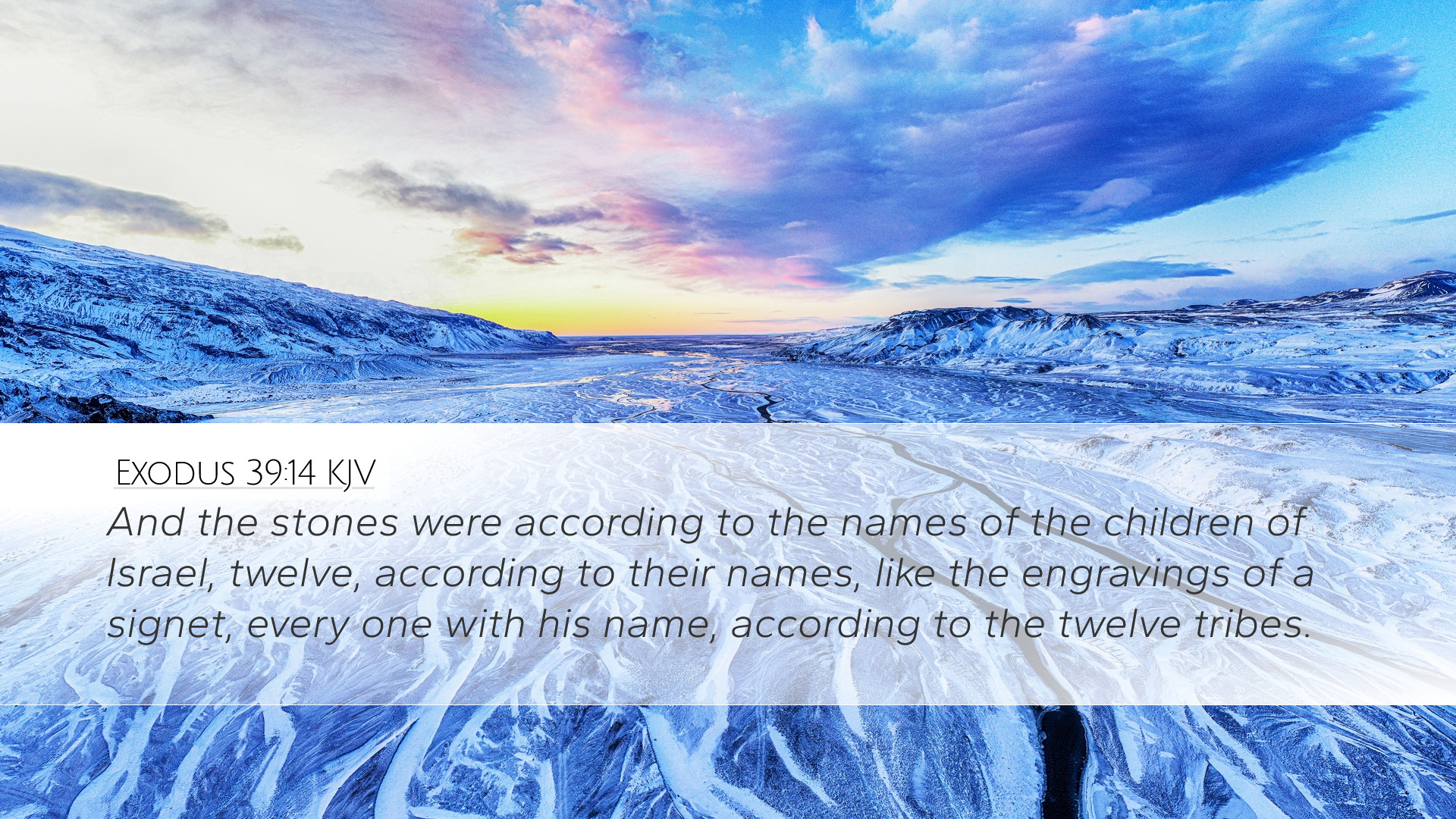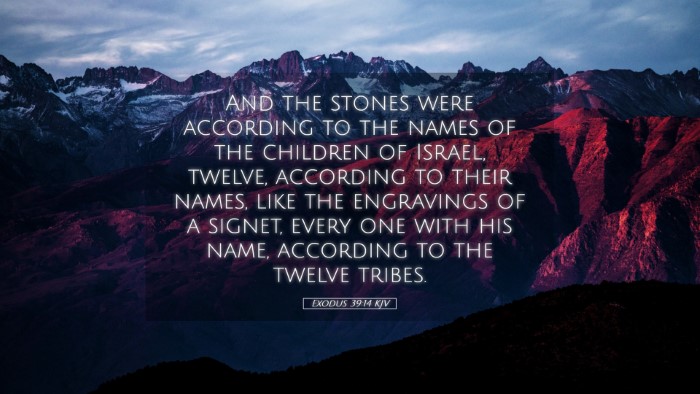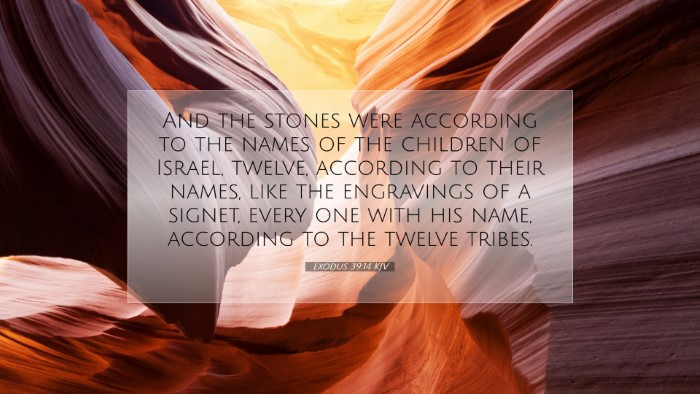Commentary on Exodus 39:14
Exodus 39:14 states: "And the stones were according to the names of the children of Israel, twelve, according to their names, like the engravings of a signet, every one with his name, according to the twelve tribes."
Introduction
This verse comes from a passage that describes the intricate preparations for the garments worn by the high priest. It highlights the significance of the stones affixed to the breastplate, representing the twelve tribes of Israel. Each stone engraved with the name of a tribe serves to remind the high priest of his role as a mediator between God and the people.
Insights from Public Domain Commentaries
Matthew Henry's Commentary
Matthew Henry emphasizes the personal nature of the high priest's duty. He suggests that the high priest bears the names of the children of Israel on his heart, symbolizing his responsibility to intercede for them. This act was not merely ceremonial but a profound representation of God's relationship with His people. Henry notes that the engravings were like those of a seal, reminding us that each tribe has a unique identity and a vital role within the nation of Israel.
Albert Barnes' Notes on the Bible
Albert Barnes provides a detailed understanding of the nature of the stones. He explains that these stones were chosen carefully, with each tribe represented not merely by their name but also reflecting their unique characteristics and divine purpose. Barnes notes that the breastplate’s design was a divine instruction, underscoring God's meticulous care for His people. Each name engraved upon the stones affirms their position and heritage, reminding Israel of their covenant relationship with God.
Adam Clarke's Commentary
Adam Clarke draws attention to the symbolism associated with the stones. He elaborates on the idea that the high priest, bearing the stones, serves as a representation of the nation as a whole. Clarke explains that the engravings are indicative of how God knows and remembers His people. He mentions that it signifies the importance of community and representation within the body of Israel. Each name engraved is a call to God, suggesting that He remembers them and their historical significance.
Theological Significance
The underlying theological significance of Exodus 39:14 cannot be overstated. This verse encapsulates the themes of remembrance, representation, and intercession. It serves to illustrate how God is intimately involved with His people and how they, in turn, are to engage with Him.
- Remembrance: The names etched into the stones remind God of His covenant with Israel, emphasizing His continuous engagement with His chosen people.
- Representation: The high priest, carrying these names, becomes a mediator, symbolizing the connection between God and the Israelites, underscoring the importance of each tribe's identity.
- Intercession: The act of carrying the names serves as a perpetual intercession for the people, reminding them of their need for divine favor and guidance.
Practical Applications
For pastors and theologians, this passage serves as a reminder of the weight of spiritual leadership. It illustrates the importance of carrying the concerns and identities of the people within the community of faith. Students of the Bible can also derive lessons about the significance of their identity in Christ and how they represent Him to the world.
- Spiritual Leadership: Leaders should recognize their role as mediators and intercessors for their communities, embodying the responsibility that comes with their calling.
- Identity in Christ: Just as each tribe had its name and representation, believers today are also called to recognize their identity in Christ and how that shapes their role within the body of believers.
- Community Engagement: The importance of community fabric is evident, encouraging engagement and representation of diverse backgrounds and stories within the faith community.
Conclusion
Exodus 39:14 offers profound insights into the spiritual and communal identity of Israel through the symbolism of the breastplate stones. It is a reminder of God's faithfulness to His people and the importance of remembering our heritage and calling. Through the reflections from Matthew Henry, Albert Barnes, and Adam Clarke, the richness of this scripture invites deeper understanding and application, encouraging a life of intercession, representation, and remembrance.


